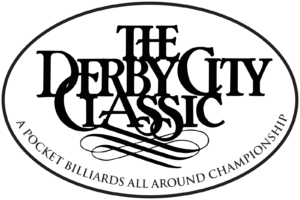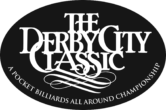Lag for Opening Break
Winner of the lag decides who breaks first. Coin toss is acceptable if both players agree.
The Rack
Fifteen balls are racked in a triangle pattern with the head ball on the spot. Use the triangle rack. When racking, do not touch the front balls, only push from the back balls.
Alternate Breaks
Players will alternate the break.
Legal Break
A legal break requires the player to pocket an object ball in other than the breakers pocket, or drive at least one object ball or the cue ball to a cushion after contact. Failure to do so is a foul. An object ball legally pocketed in the breakers pocket is a re-rack and re-break.
A Maximum of 4 Object Balls Allowed Above the Head-String
At the end of a players inning, if more than 4 object balls remain above the head-string, all object balls above the head-string will spot immediately. A ball is considered above the head-string if any part of the ball is touching the head-string. (Edge of ball determines)
Scratch or Foul
Any scratch or foul results in loss of a ball. If you have no balls to spot, you “owe” a ball. You must spot what you owe at the end of your inning in which you have balls available to spot. The incoming player has cue ball in hand behind the head string after a scratch or cue ball off the table foul. The cue ball stays in position for other fouls, not specifically addressed in the rules. If a scratch or foul is “slept” and subsequently remembered, the ball is spotted after each player has shot once.
Ball Jumped Off the Table
If the cue ball or an object ball is jumped off the table to prevent an object ball from counting toward the opponents ball count, the object ball will go in the opponents pocket and count toward their ball count and it is a foul and cue ball in hand behind the head string for the opponent.
Both Players Cannot have a Negative Score
If the ball count scores of both players reach a negative count, the negatives will cancel each other out, until at least one player gets back to a ball count of zero.
Ball Count of -5 Loss of Game
Any ball count score that reaches negative five (-5) is loss of game.
Trapping or Wedging the Cue Ball
It is a foul if a player deliberately traps or wedges the cue ball in the jaw of a pocket. In addition to the foul penalty, the opponent receives cue ball in hand behind the head string.
Deliberate Cue Ball Foul
If a player wishes to take a deliberate cue ball foul, they must use their cue tip to strike the cue ball with a forward stroke. If they strike the cue ball with anything other than the cue tip, in addition to the foul penalty, the opponent receives cue ball in hand behind the head string and it is considered unsportsmanlike conduct.
Shooting into the Wrong Pocket
If a player shoots into the wrong pocket and continues to shoot because their opponent failed to notify them of the error, any additional balls pocketed in that inning do not count, whether pocketed for the shooter or the opponent. The first shot to the wrong pocket in a given inning is the shooter’s responsibility, and the opponent is entitled to any balls pocketed on that first shot. However, any other pocketed balls in the wrong pocket in the same inning are to be spotted as illegally pocketed balls.
3-Foul Rule
If a player commits 3 successive fouls in one game, it is loss of game. The opponent must notify the shooter that they are “on 2” fouls, immediately before the shooter’s next inning.
Slow Play
Slow play will not be tolerated. Tournament officials will issue a warning if they feel a player is delaying the progress of the match. A second warning will result in ball in hand anywhere on the table. A third warning is loss of game. A fourth occurrence is loss of match.
All Balls are Behind the Head String with Cue Ball in Hand
The object ball closest to the head string is spotted if this occurs. If 2 or more object balls are the same distance from the head string, the incoming shooter will designate which ball to spot.
Winning the Game
The first player to legally pocket eight (8) object balls in their pocket wins the game.
4 Hour Match Limit
The player that is leading in the game and ball count wins the match. If both players are tied in the game and ball count, the next player to take the score lead (games plus ball count) wins the match. (This score lead can be determined by pocketing a ball or a foul shot)
For further detailed One-Pocket rule explanations, see website onepocket.org



